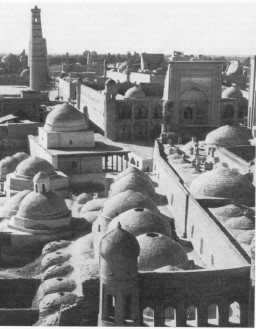Originally the homom would have consisted of a communal bath area heated by a series of underground canals. Restored to use in the 1980's, today's homom is a poor replica of its former glory. A garish entrance hall festooned with garlands of plastic flowers and blaring Turkish pop music leads to shoddy, Russian-style saunas which have replaced the original steam-heated communal rooms.
Homoms have always played an important role in Central Asian life and continue to do so today since many houses still lack bathrooms. They were places to relax and socialise as well as to wash and take part in the Islamic ritual purification rites before Friday prayers. Similar to a sauna, men would sit on heated marble surfaces in a steam room and wash themselves down with water from a bucket before having a shave - of their heads that is, not their beards.









